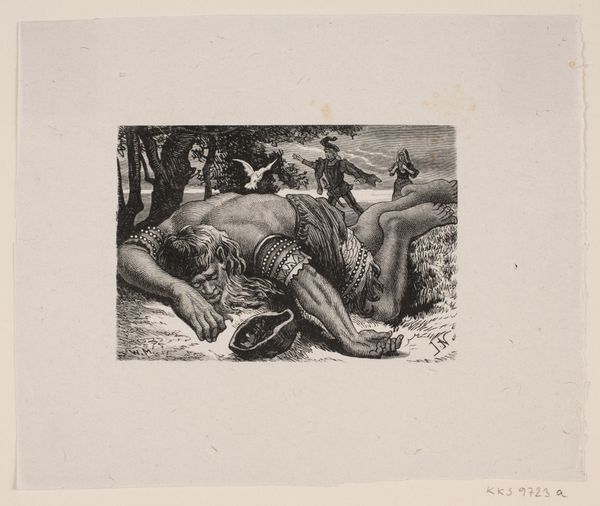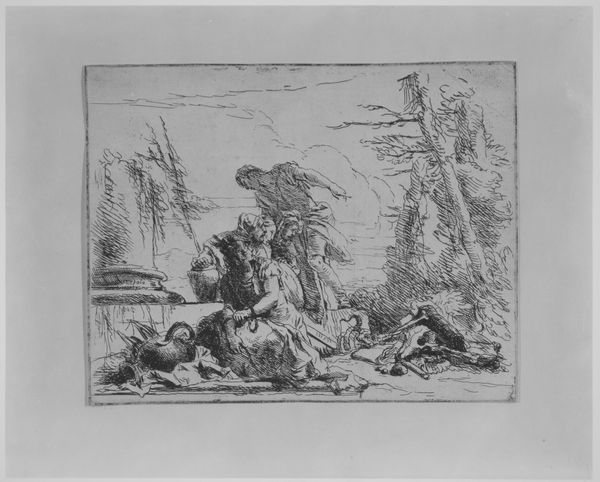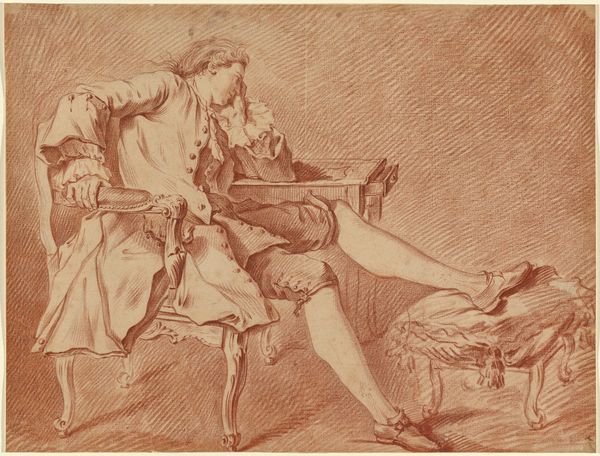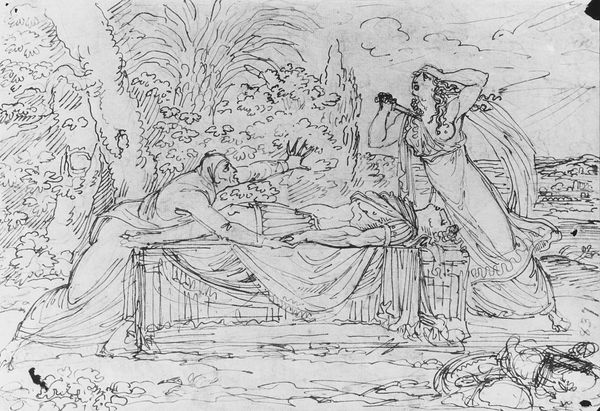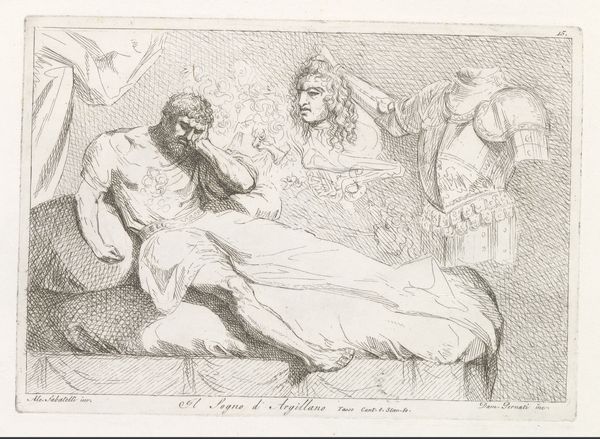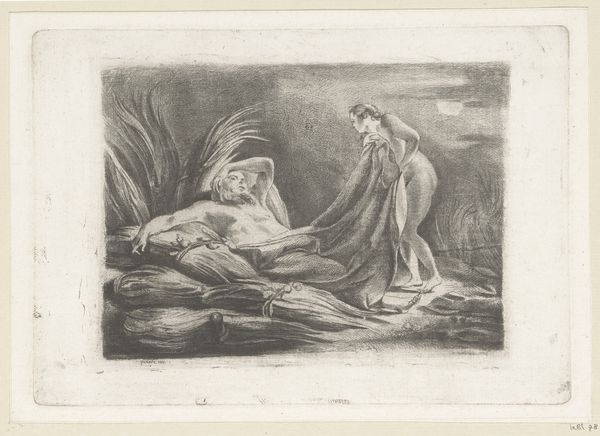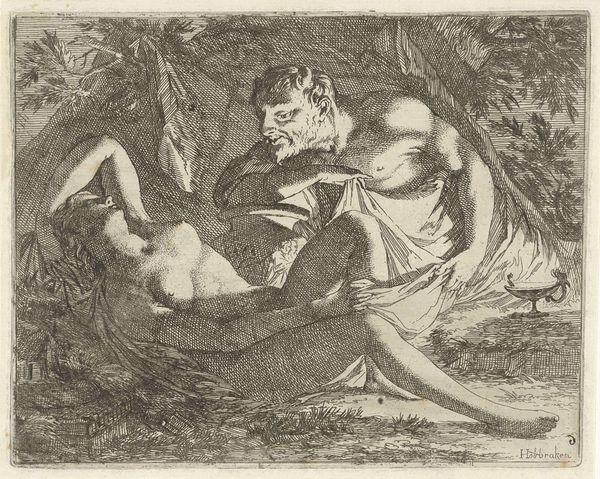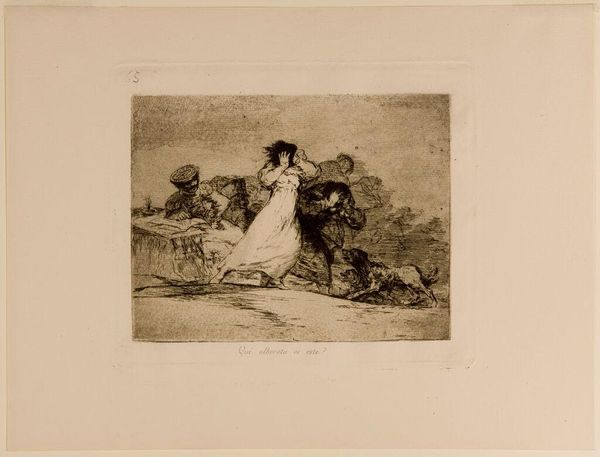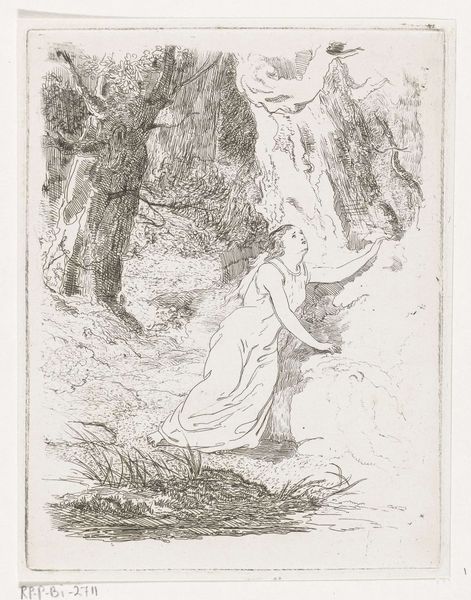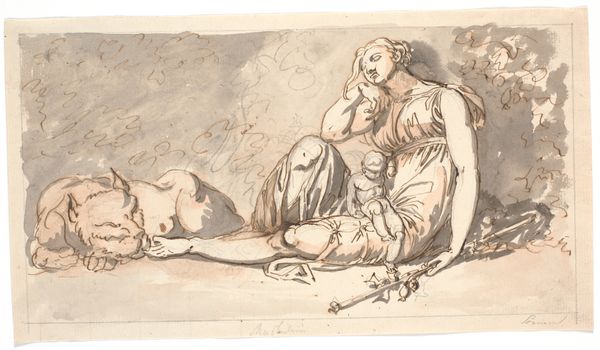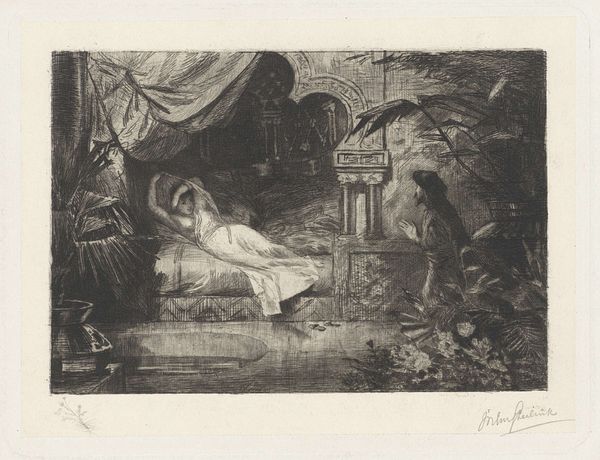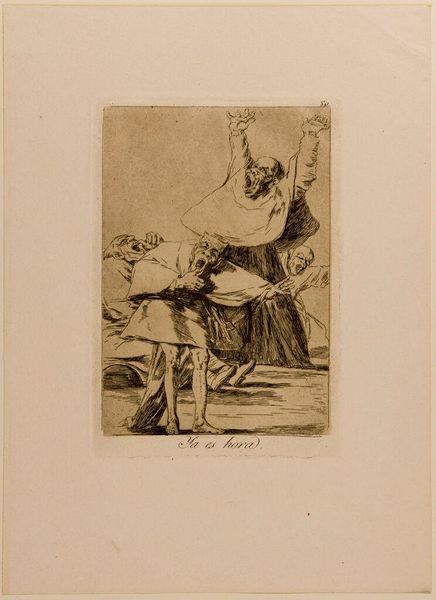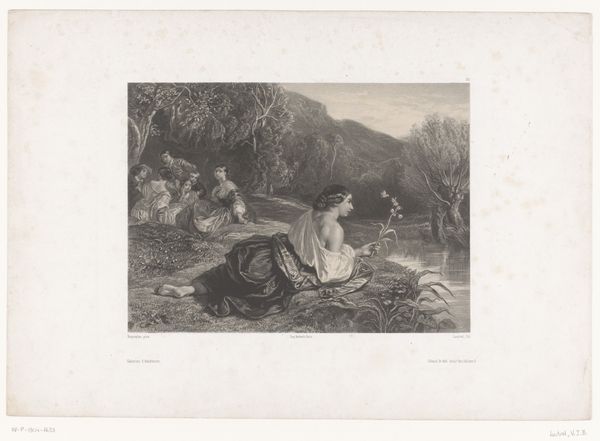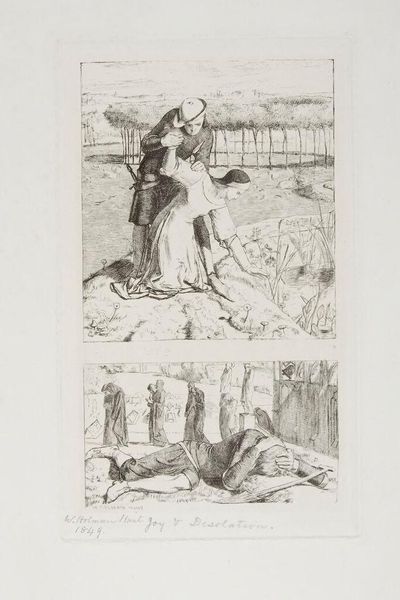
Panthea Stabs Herself beside the Corpse of Abradatas 1738 - 1820
0:00
0:00
Dimensions: 8 1/4 x 12 3/16 in. (21 x 31 cm)
Copyright: Public Domain
Curator: Here we have Benjamin West's pencil drawing, "Panthea Stabs Herself beside the Corpse of Abradatas," created sometime between 1738 and 1820. Editor: A truly tragic scene—it's raw, you can feel the characters' emotional turmoil etched right into the page through those lines. Curator: West was known for his large-scale history paintings. Yet, here, in this drawing, we see the intimate intensity he brings to the story, focusing on the very act and implements of its creation. Pencil, paper—readily available materials used to depict such profound emotional weight. How do the economical means affect the way we perceive this image? Editor: Absolutely, West stages it like a brutal theatre. It hits hard—the male figure reaching towards the dead couple could represent a patriarch reacting to an unthinkable outcome for his lineage and legacy, highlighting a power structure threatened by female agency. Curator: The quick, sketchy lines contribute to a sense of immediacy, almost like a news report of the time. And while the material seems humble, West's attention to detail—the drapery, the musculature—suggests a deep understanding of classical forms. This careful execution contrasts with the horror of the event. Editor: The dead soldier's discarded helmet and the female figure's stance highlight the social expectation of a noble death on the battlefield. Instead, Panthea takes control, making a conscious choice to wield the same weapon that brought her beloved to this end, leveling a battlefield that transcends mere militarism. Curator: There's a certain starkness to the scene because he chose to depict such high drama with just pencil and paper. It also serves to humanize these figures taken from antiquity or myth. It shows they, too, are subject to simple tools. Editor: This drawing opens a dialogue, then. We're prompted to question not just the "who," "what," and "where," but also the "how," and, more crucially, the "why." What drove West to extract such brutal agency and place it into the hands of his female protagonist, considering the historical gender context? Curator: Ultimately, this drawing makes a direct statement: even in its most basic material form, it offers both historical depth and a poignant connection. Editor: I’d add it underscores a silent scream—the quiet pencil lines can reveal far more than vibrant colors and oils might suggest. The raw immediacy lends greater power.
Comments
No comments
Be the first to comment and join the conversation on the ultimate creative platform.
